 Overview
Overview
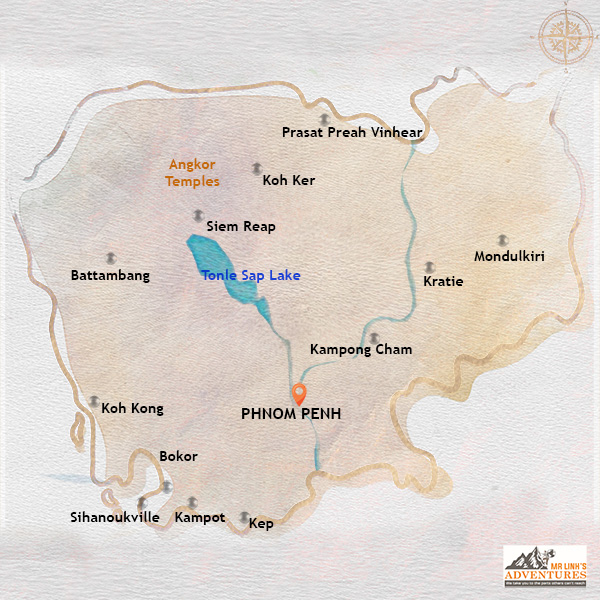
With its 2.5 million inhabitants,
Phnom Penh is a dynamic city where animation blends with serenity.
Let yourself be seduced by its architecture, travel the streets by tuk-tuk, and soak up the unique atmosphere of its cafes and its booming culinary scene. Stroll through the colorful markets, immerse yourself in history by visiting the many museums, and marvel at the splendor of the Royal Palace.
Urban life flourishes along the banks of the Mekong and Tonlé Sap rivers, offering a multitude of opportunities to enjoy the pleasures of the waterfront.
Both bustling and peaceful, Phnom Penh is an essential stop on any trip to Cambodia.
 Top Attractions
Top Attractions
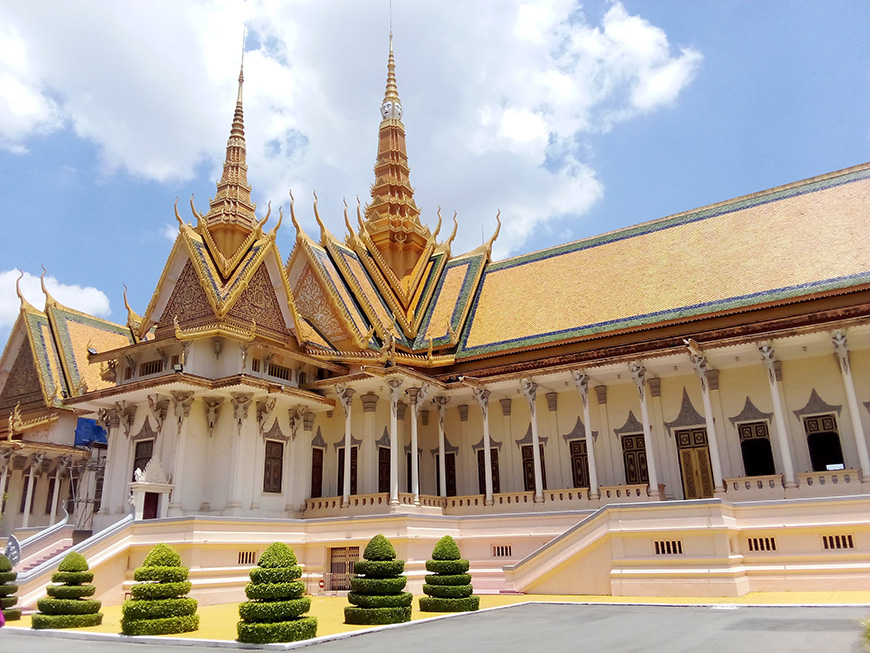 The Silver Pagoda is a significant temple in the Royal Palace - Mr Linh's Adventures Team
The Silver Pagoda is a significant temple in the Royal Palace - Mr Linh's Adventures Team
When in Phnom Penh, make sure to visit these key attractions:
The Royal Palace & Silver Pagoda
Explore the grandeur of Cambodian royalty at this stunning complex. Witness the opulent Throne Hall and the Silver Pagoda, home to a dazzling gold Buddha and countless other treasures.
Wat Phnom
Discover this historic temple perched on a hill, offering panoramic views of the city.
Tuol Sleng Genocide Museum (S-21) & Choeung Ek Memorial (Killing Fields)
These profoundly moving sites serve as a somber reminder of the Khmer Rouge regime's atrocities, emphasizing the critical importance of remembering history to prevent its recurrence.
 See & Do
See & Do
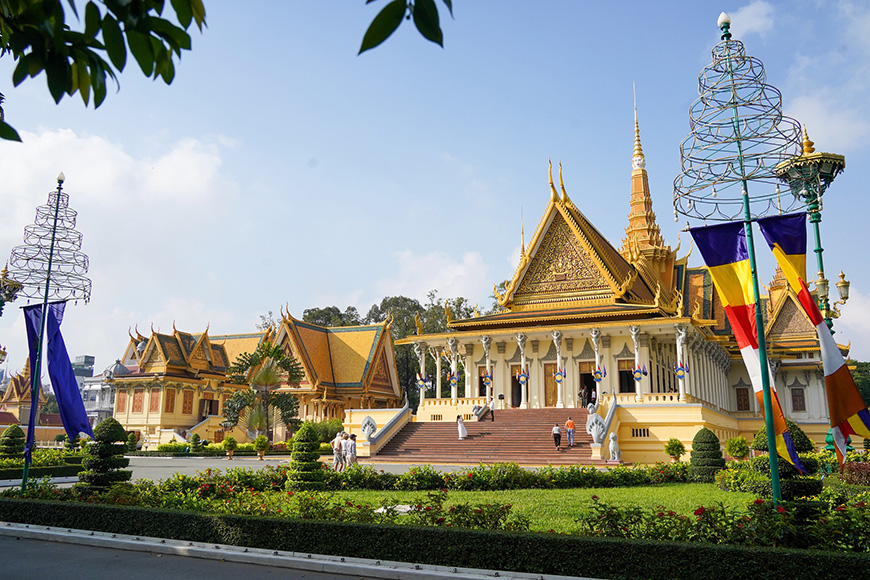 The famous silver pagoda, also known as Wat Preah Keo - Mr Linh's Adventures
The famous silver pagoda, also known as Wat Preah Keo - Mr Linh's Adventures
The Royal Palace is one of the most emblematic sites of Phnom Penh. Official residence of King Sihamoni, this vast complex located on the banks of the river attracts many visitors.
Although some parts of the palace are reserved for the royal family, the visit of the spaces open to the public offers a fascinating insight into Cambodian history and culture. The Throne Hall: It is one of the most impressive rooms of the palace. It is used for coronations and official ceremonies.
Located within the Royal Palace, the Silver Pagoda, also known as Wat Preah Keo, is a true treasure of Khmer art. Its name comes from the five tons of silver that cover its floor. The staircase leading to the pagoda is made of sparkling Italian marble, and the interior houses a massive 90 kg gold Buddha adorned with more than 2,000 diamonds. There are also other Buddha statues in bronze and silver, as well as original Khmer works of art.
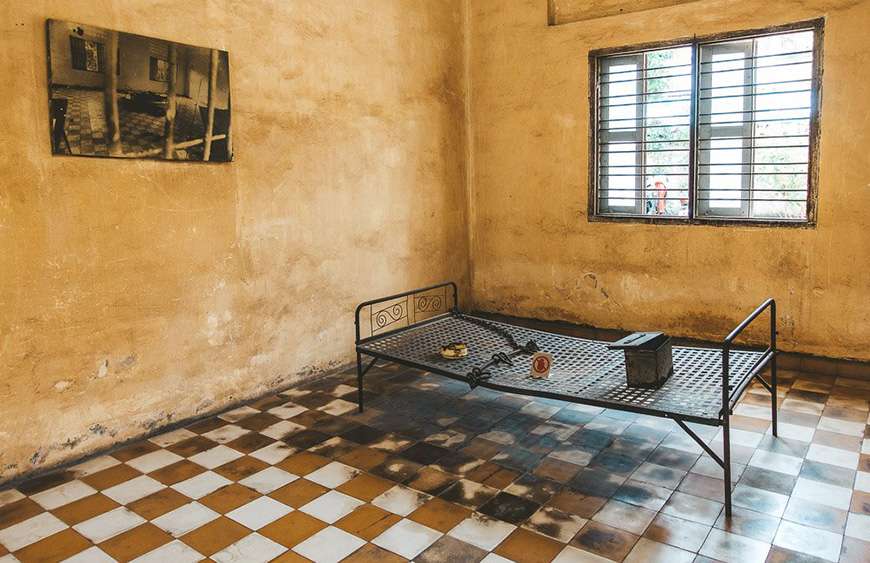 The Tuol Sleng Genocide Museum memorializes the atrocities of the Khmer Rouge
The Tuol Sleng Genocide Museum memorializes the atrocities of the Khmer Rouge
The Tuol Sleng Genocide Museum, located in a former school transformed into a prison by the Khmer Rouge, testifies to the tragedy of this dark period in Cambodian history. Security Prison 21 (S-21) was the largest detention and torture center in the country. The museum tells the story of the victims and offers a profound reflection on the atrocities committed.
Located on the outskirts of Phnom Penh, Choeung Ek, sadly famous as the "Killing Fields," is an important place of remembrance. It was here that 17,000 prisoners from the S-21 prison were executed by the Khmer Rouge. Between 1975 and 1979, more than a million people were reportedly killed in Choeung Ek and other execution sites across Cambodia. Today, Choeung Ek is a place of reflection and contemplation. A memorial composed of more than 8,000 skulls was erected on the site in the 1980s, testifying to the barbarity of the Khmer Rouge regime.
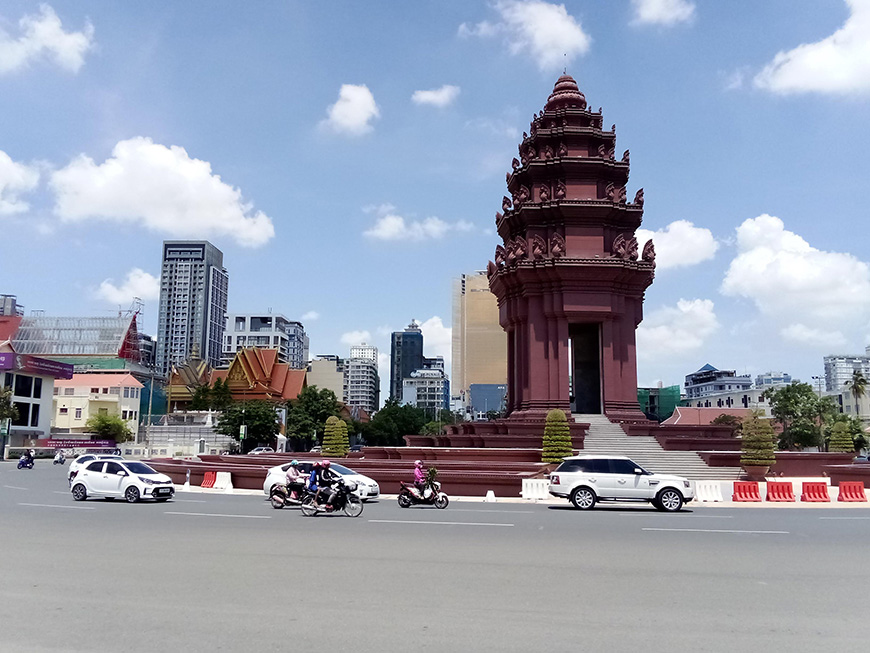 The Independence Monument honors Cambodia’s 1953 independence from France - Mr Linh's Adventures Team
The Independence Monument honors Cambodia’s 1953 independence from France - Mr Linh's Adventures Team
The Independence Monument is an emblematic place of Phnom Penh. It commemorates Cambodia's independence from France in 1953. This 57-meter-high lotus-shaped building is a popular gathering place during national celebrations and festivals.
For a fresh look at the city, take a boat trip along the Mekong and Tonle Sap Rivers from Sisowath Quay. You can even enjoy Cambodia's wildlife right from Phnom Penh!
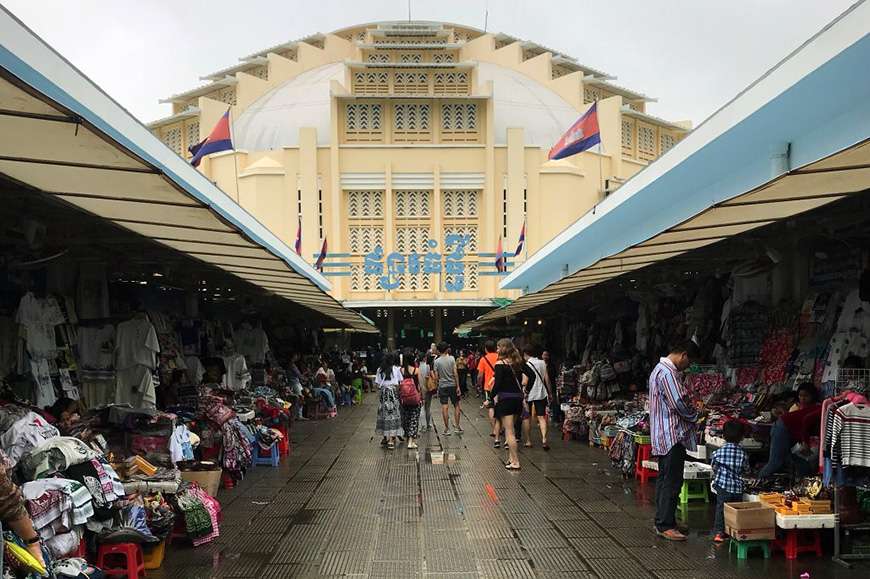 In Psar Thmey, you can discover not only the goods selling here but also the lifestyle of Cambodian
In Psar Thmey, you can discover not only the goods selling here but also the lifestyle of Cambodian
Phnom Penh is full of lively markets, offering a unique shopping experience and a dive into the heart of Cambodian culture.
Psar Thmey (Central Market): an architectural gem
The Psar Thmey, also known as the Central Market, is a must-see in Phnom Penh. Its Art Deco architecture and its immense golden dome make it an emblematic place. You will find a wide variety of products, ranging from jewelry to antiques, through clothing and food stalls.
Russian Market: an authentic atmosphere
The Russian Market, meanwhile, is renowned for its lively atmosphere and affordable prices. More popular than Psar Thmey, it offers a multitude of handicrafts, souvenirs and food stalls. It is the ideal place to make good deals and discover local crafts.
To discover Phnom Penh from a different angle, there is nothing like a boat trip on the Mekong and Tonlé Sap. You can admire the urban and river landscapes, and enjoy a peaceful atmosphere.
Located outside the city, the Phnom Tamao Wildlife Rescue Center is a unique place to observe and interact with wild animals rescued from the illegal trade. You can meet elephants, tigers, macaque monkeys and many other species.
 Go Green
Go Green
Mr Linh's Adventures offers tours in Phnom Penh that will make you discover the most authentic aspects of the city and its surroundings. You can for example opt for a day trip in the surrounding countryside, where you will visit fishing villages, rice paddies and ancient temples.
For the more adventurous, Mr Linh's Adventure also offers multi-day tours that will take you to discover the most emblematic sites of Cambodia, such as the temples of Angkor, the city of Siem Reap and the south coast of the country.
 Heritage
Heritage
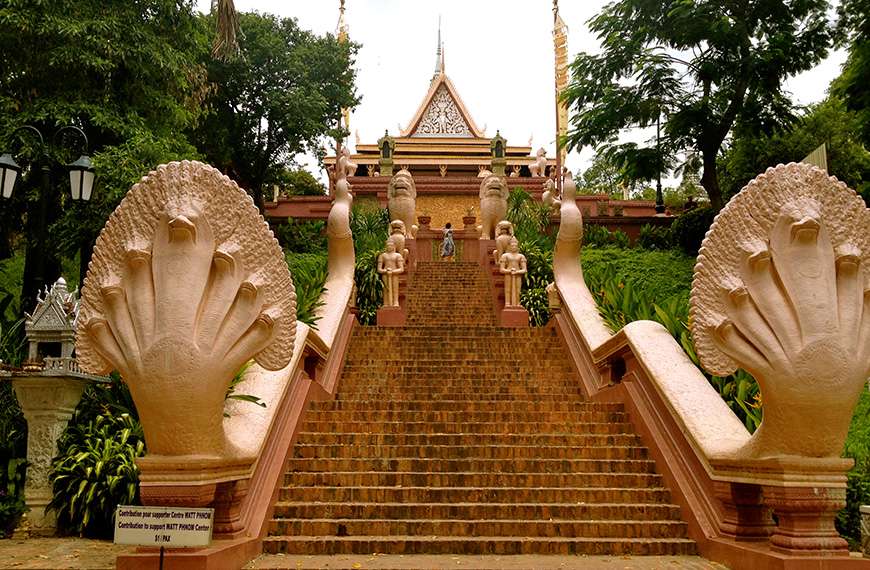 Located in the heart of Phnom Penh, Wat Phnom is a peaceful and historic temple
Located in the heart of Phnom Penh, Wat Phnom is a peaceful and historic temple
Wat Phnom is one of the most revered Buddhist temples in Phnom Penh. Its history is intimately linked to the founding of the city.
It is said that in 1372, a rich widow named Lady Penh discovered in the river a floating tree containing four bronze Buddha statues and a stone Vishnu statue. She had a hill erected near her house and built a temple there to house these sacred statues. This temple was known as Wat Phnom, which means "the hill of Penh," giving its name to the city of Phnom Penh. Today, the 27-meter-high hill is the only one in the city. Wat Phnom is an important place of worship for the inhabitants, who come to meditate and pray for luck. The temple also houses magnificent works of art, monuments and ancient objects.
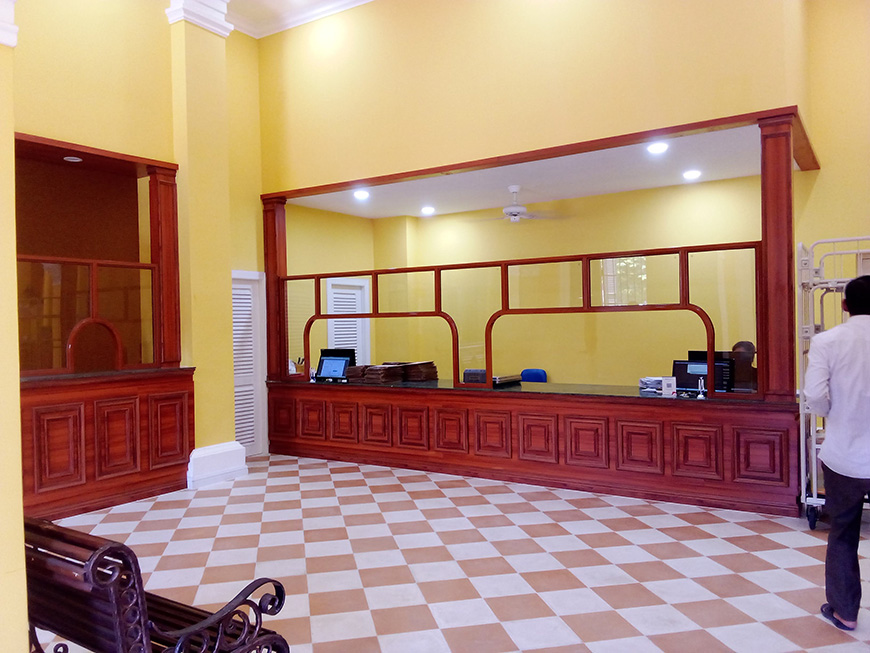 The Post Office is located in the formerFrench district - Mr Linh's Adventures Team
The Post Office is located in the formerFrench district - Mr Linh's Adventures Team
The colonial district of Phnom Penh, located in the heart of the former French administrative district, offers a glimpse into the remarkable architectural heritage of the city. This district is home to several buildings from the colonial era, reflecting a mixture of French and Khmer styles.
The buildings of this era, built in a mixture of French and Khmer styles, attract many foreign tourists every year. In 2016, a study identified 523 French colonial structures in Phnom Penh, including 448 residential buildings.
The Phnom Penh Central Post Office, located in the heart of the former French administrative district, is one of the most remarkable colonial architectural heritages of the city. Built in 1890 according to the plans of the French architect Daniel Fabre, it presents a neo-classical style characterized by balustrades, pediments carved in stucco, columns and balconies. After a restoration, it regained its current form in 2004.
Built in reinforced concrete by the architect Jean Desbois in 1932, the Phnom Penh railway station is an example of Art Deco architecture of the colonial era.
Today known as Raffles Hotel Le Royal, is a five-star luxury hotel that opened its doors in 1929 under the name of Hotel Le Royal, is the most emblematic colonial building in Phnom Penh. Restored and reopened in 1997 by Raffles Hotels and Resorts, it has retained the charm of the interior and exterior of the main building.
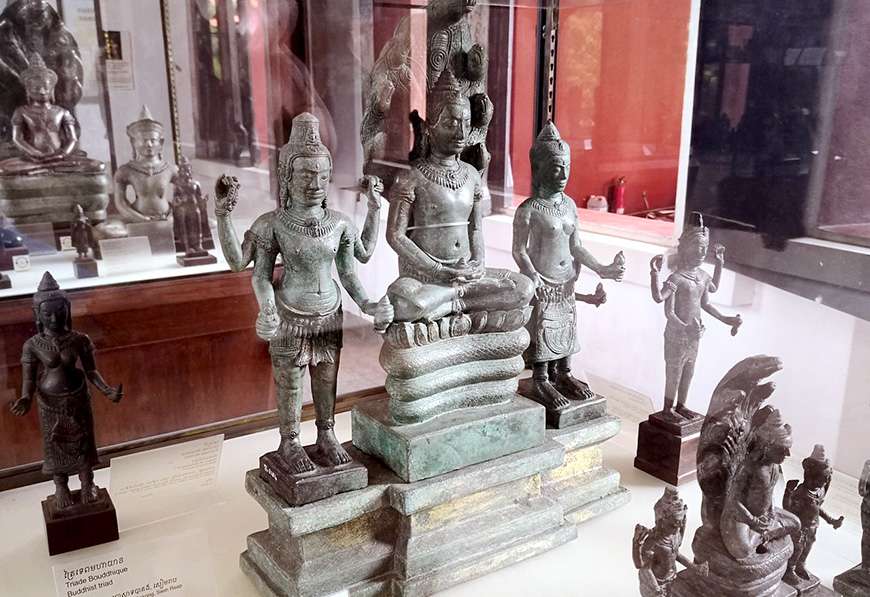 The National Museum of Phnom Penh is the country's largest archaeological and historical museum
The National Museum of Phnom Penh is the country's largest archaeological and historical museum
The National Museum of Cambodia is a must-see for art and history enthusiasts. It houses one of the most important collections of Khmer art in the world, with rare and exceptional pieces from all over Cambodia.
The museum itself is a work of art. Its traditional terracotta architecture, built in the 1910s, is a tribute to Khmer craftsmanship. The museum houses a wide variety of objects, ranging from impressive Vishnu sculptures to pre-Angkorian pottery and bronzes. You can discover masterpieces of Khmer art, witnesses of the richness and diversity of Cambodian culture.
Phnom Penh comes alive throughout the year, especially during its traditional festivals, which are an opportunity to celebrate Cambodian culture and traditions.
The Khmer New Year: a joyful and spiritual celebration
The Khmer New Year, one of the most important festivals in the Cambodian calendar, is celebrated in April for three days. It is a time of joy and sharing, where the inhabitants go to the temples to make offerings and receive blessings. The streets of Phnom Penh are also animated with festivities and a carnival atmosphere.
The Water Festival: a fluvial and festive spectacle
The Water Festival (Bon Oum Touk), which takes place in November, is another major event in Phnom Penh. The celebrations are concentrated on the Tonle Sap River, where spectacular boat races, fireworks, concerts and parties that last until the end of the night take place.
 Food & Drinks
Food & Drinks
.jpg) From rich curries to flavorful noodle soups and vibrant salads, Cambodian cuisine boasts incredible diversity
From rich curries to flavorful noodle soups and vibrant salads, Cambodian cuisine boasts incredible diversity
The food in Phnom Penh is a dynamic fusion, drawing from Khmer, French, and Chinese influences to offer a wide array of delicious options. Highlights include Fish Amok, a fragrant steamed fish curry, and the popular noodle soup, Kuy Teav.
One of the culinary specialties of Phnom Penh is Kuy Teav Phnom Penh, a local interpretation of rice and noodle soup. This tasty dish is omnipresent in the city, from street vendors to the most refined restaurants.
Exploring the street food scene is also essential, where you'll find treats like Nom Banh Chok (Khmer noodles), Beef Lok Lak (Stir-fried beef, typically served with a peppery lime dipping sauce) and Bai Sach Chrouk (pork and rice).
 Directions
Directions
Location
Phnom Penh is located in the center of Cambodia, at the confluence of the Mekong, Tonlé Sap, and Bassac rivers.
How to get there
You can reach Phnom Penh from Hanoi or Ho Chi Minh City by air. Several airlines offer direct flights between these cities and Phnom Penh. Ticket prices vary depending on the airline and the time of year.
Best season to visit
The best time to visit Phnom Penh is from November to March, during the dry season. The temperatures are pleasant and there is little rain.